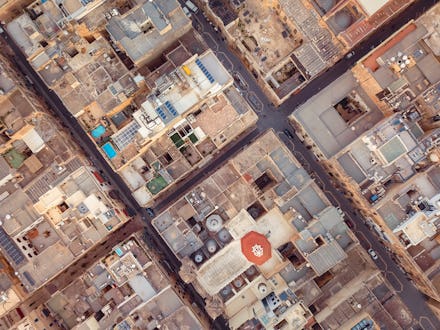A new study confirms systemic racism is horrible for the environment, too

Systemic racism has long disadvantaged people of color. These inequalities are often in full display in cities, where racist practices like redlining relegates Black people and members of other marginalized communities to certain areas while restricting their ability to purchase homes and build equity. But the harms of these discriminatory behaviors built into our institutions extend beyond the human toll. According to a new study published in the journal Science, systemic racism is actively damaging environmental health in cities, adversely affecting the plants and animals that live there.
The paper's authors examined the findings of more than 170 published studies that focused on the effects of systemic inequalities on ecology in cities. What they found was a considerable lack of environmental justice and an ongoing failure to protect and preserve the ecosystems in and around communities of color. Researchers found that the trickle down of systemic racism has resulted in evolutionary shifts, forcing plants and animals to adapt in order to survive. In some cases, wildlife has been forced to leave the region entirely or has been caused to go extinct due to the ongoing dismantling of their local ecosystems. The paper concludes that systemic racism and other inequalities play an active role in reducing biodiversity within cities and requires a new focus on anti-racism practices within city planning projects to help extend the necessary resources to communities that have long been neglected.
The effects of systemic racism on biodiversity are not always easy to see, as they often are the result of decades' worth of decision making. For instance, the paper points out that low-income and majority-minority communities often have fewer trees planted in their neighborhoods. Trees are one of the building blocks of biodiversity within cities, providing plants and animals with the habitat they need to survive. They provide cover and shade that protect against hot temperatures, an increasing threat to American cities. They can also improve the air quality of areas that may otherwise be faced with harmful air pollutants. Simply failing to plant trees makes the environment worse for both the humans and the plants and animals that occupy the area.
These small but significant decisions are exacerbated by the existing conditions that often face these communities. Communities of color tend to be closer to sources of pollution, including waste sites and dirty-burning energy plants, which results in worse air quality. Similarly, the lack of trees and greenspace in these areas means more concrete and asphalt, which absorb heat. The result of this is urban heat islands, in which parts of cities are significantly hotter than the surrounding areas.
As biodiversity decreases in these areas, new threats can present themselves. As the ecosystem breaks down, small and adaptable creatures like rats tend to survive and increase their populations as their predators move out. Unfortunately, the creatures that thrive in these conditions can often spread harmful viruses and diseases to humans. That can result in communities of color facing more severe health threats, as they have in the case of coronavirus.
The paper makes it abundantly clear that systemic racism is killing people. While it may not be happening in a way that is as visually shocking as the type of imagery that comes from instances of police brutality, it is pervasive within our cities and is the result of decades of injustice. Acknowledging it is the first step. Addressing it might require rethinking even the most basic aspects of city planning.